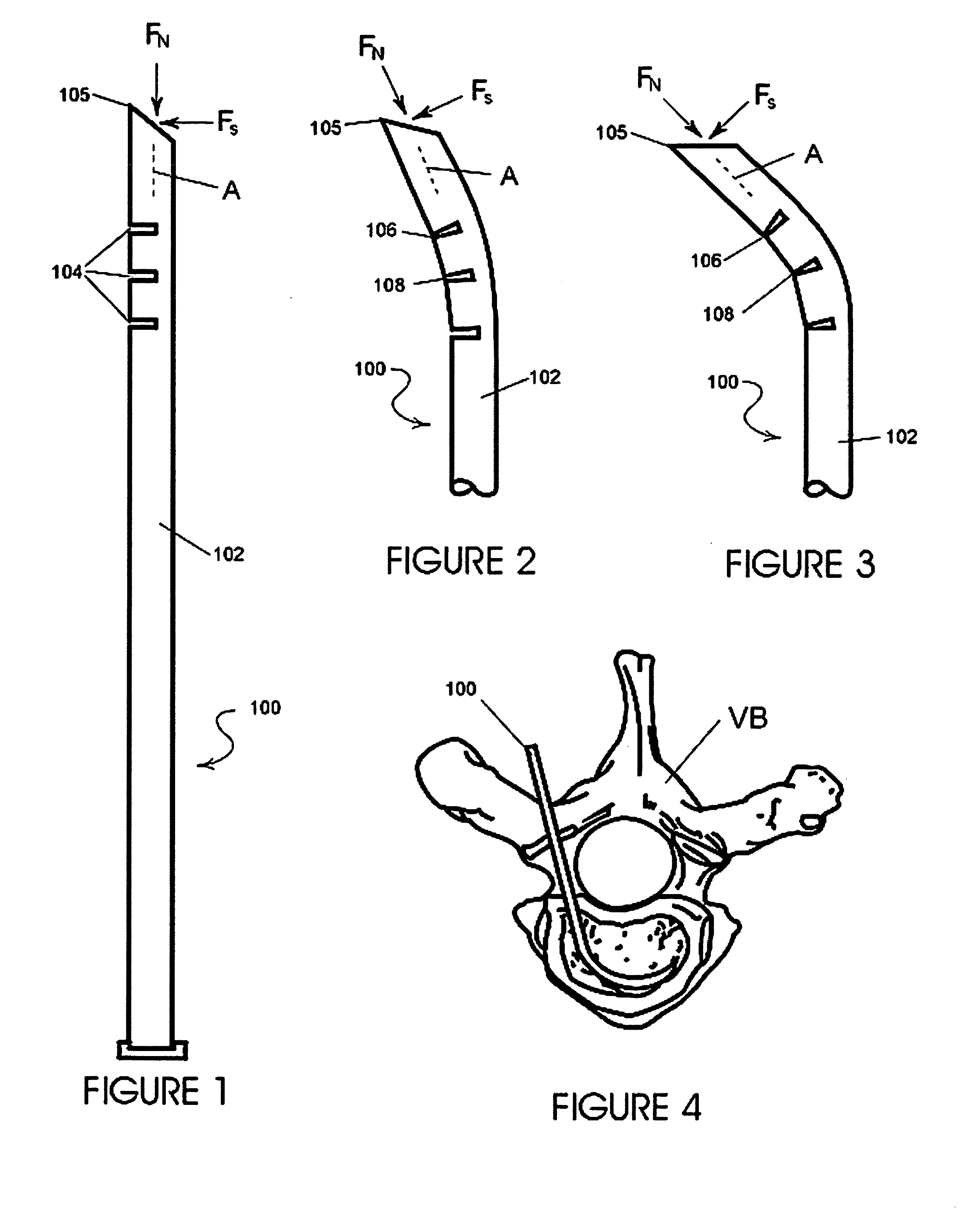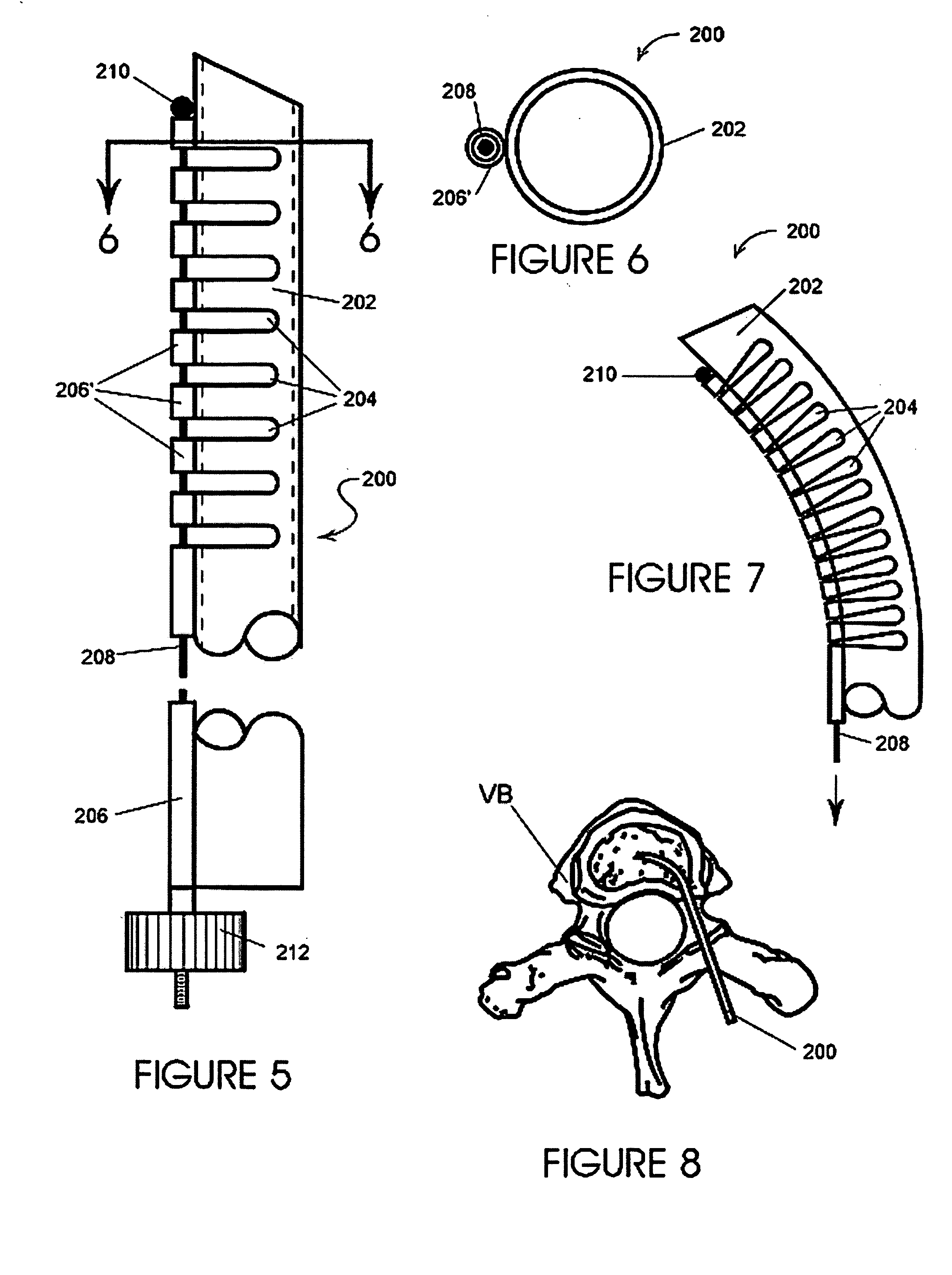Orthopedic surgery access devices
a technology for access devices and orthopaedic surgery, which is applied in the field of minimally invasive orthopedic surgery instruments, can solve the problems of predisposing the bone to fracture, prolonging healing, and weakening the bone structure, and achieves the effect of reducing the bending stiffness of the access device and facilitating access to both sides
- Summary
- Abstract
- Description
- Claims
- Application Information
AI Technical Summary
Benefits of technology
Problems solved by technology
Method used
Image
Examples
Embodiment Construction
[0022] A first access device 100 according to the invention is illustrated in FIGS. 1-4. The access device 100, which allows access to the contralateral side of the vertebral body from a single intrapedicular access point, is a buckling needle, guide wire, or trocar that alters its shape from straight to curved through the action of engineered buckling zones to permit bilateral vertebral access.
[0023] In the prior art, certain needle trocars have had angled bevel points. When the point contacts a solid material as the trocar is being advanced through tissue, a side load is induced on the needle, thereby causing it to deflect. Typically, this deflection is effected by light mallet strikes to the proximal end of the trocar, wherein the shock load transfers down the stiff shaft of the trocar. Continued advance of the trocar causes the needle as a whole to deflect according to the position of the bevel; the trocar itself, however, remains essentially straight, and it simply follows an ...
PUM
 Login to View More
Login to View More Abstract
Description
Claims
Application Information
 Login to View More
Login to View More - R&D
- Intellectual Property
- Life Sciences
- Materials
- Tech Scout
- Unparalleled Data Quality
- Higher Quality Content
- 60% Fewer Hallucinations
Browse by: Latest US Patents, China's latest patents, Technical Efficacy Thesaurus, Application Domain, Technology Topic, Popular Technical Reports.
© 2025 PatSnap. All rights reserved.Legal|Privacy policy|Modern Slavery Act Transparency Statement|Sitemap|About US| Contact US: help@patsnap.com



